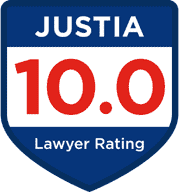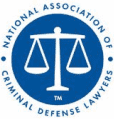The Tragic Consequences of Accidents at Railroad Crossings in Chicago
Chicago’s vast rail network has long been a cornerstone of the city’s transportation infrastructure, with hundreds of railroad crossings scattered throughout the metropolitan area. These crossings, where roadways intersect with active rail lines, serve as critical junctures in the city’s transportation system. However, they also represent points of potential catastrophe where trains weighing hundreds of tons can collide with vehicles or pedestrians with devastating results.
The Chicagoland area contains one of the nation’s densest concentrations of railroad crossings, with multiple major railroads operating through the region, including Metra, Amtrak, BNSF, Union Pacific, Norfolk Southern, and numerous others. This complex network of rail lines intersects with roads at more than 1,500 at-grade crossings throughout Cook County alone, creating thousands of potential conflict points between trains and other road users.
Despite warning systems, gates, and public awareness campaigns, accidents at these crossings continue to occur with alarming frequency. When they do, the consequences extend far beyond the immediate crash. The ripple effects of these incidents touch countless lives, creating profound and lasting impacts that transform families, burden communities, and leave scars both visible and invisible.
The Ultimate Price: Human Life and Catastrophic Injuries
The most devastating consequence of railroad crossing accidents is the loss of human life. The physics of these collisions are unforgiving – a typical freight train traveling at 55 mph may take more than a mile to stop, even with emergency braking. The massive weight disparity between trains and road vehicles creates collision forces that human bodies and vehicle structures simply cannot withstand.
For those who survive railroad crossing collisions, catastrophic injuries often result in permanent disability and lifelong medical challenges. Among the most common severe injuries are:
- Traumatic Brain Injuries (TBI): The extreme forces in train-vehicle collisions frequently cause violent head movement or direct head trauma. These injuries can range from concussions to severe brain damage, potentially resulting in permanent cognitive impairment, personality changes, memory loss, speech difficulties, and motor function problems. Even “mild” TBIs can have life-altering consequences that affect a person’s ability to work, maintain relationships, or live independently.
- Spinal Cord Injuries (SCI): The violent impact of train collisions can fracture vertebrae and damage the spinal cord, potentially resulting in partial or complete paralysis. Quadriplegia (paralysis affecting all four limbs) and paraplegia (paralysis affecting the lower limbs) are common outcomes in severe railroad crossing accidents. These injuries typically require lifelong medical care, specialized equipment, and significant lifestyle adaptations.
- Amputations: The crushing forces in train collisions can cause traumatic amputations at the scene or injuries so severe that surgical amputation becomes necessary. Loss of limbs creates immediate functional limitations and necessitates prosthetics, extensive rehabilitation, and often home and vehicle modifications to accommodate the disability.
- Crush Injuries and Polytrauma: The tremendous forces in train-vehicle collisions can crush vehicle structures, trapping occupants and causing multiple severe injuries simultaneously. These complex injury patterns, known as polytrauma, often involve damage to multiple body systems and require coordinated care from various medical specialists. Internal organ damage, multiple fractures, and vascular injuries frequently occur together, complicating treatment and recovery.
- Severe Burns: Though less common than other injuries, fires can occur in train-vehicle collisions, particularly when fuel tanks rupture. Burn injuries cause extreme pain, require specialized treatment including skin grafts, and often result in permanent scarring and disfigurement.
The medical consequences of these catastrophic injuries extend far beyond initial hospitalization. Survivors often face years of surgeries, rehabilitation, and therapy. Many never fully recover, instead learning to adapt to permanent disabilities that fundamentally alter their daily lives and future prospects. Physical pain becomes a constant companion, and the loss of bodily function creates cascading challenges in every aspect of life.
Echoes of Trauma: The Deep Emotional and Psychological Scars
The psychological and emotional aftermath of railroad crossing accidents often proves as debilitating as physical injuries, yet these invisible wounds frequently receive less attention and treatment. For survivors, the trauma extends far beyond the physical pain of their injuries.
Common psychological impacts include:
- Post-Traumatic Stress Disorder (PTSD): Symptoms can include intrusive flashbacks of the accident, nightmares, severe anxiety, and emotional reactions triggered by stimuli associated with the event – such as the sound of train horns or the sight of railroad tracks. Many survivors develop specific phobias related to trains or crossings, making travel difficult.
- Depression and anxiety disorders: Compounded by the challenges of adapting to injuries and disabilities, survivor’s guilt can torment those who lived through accidents that claimed others’ lives.
For families who lose loved ones in railroad crossing accidents, grief takes on many forms. The sudden, violent nature of these deaths often complicates the bereavement process. The loss of companionship, support, and shared future plans creates voids that can never truly be filled. When the deceased was a family’s primary earner, financial stress compounds emotional suffering.
Families caring for severely injured survivors face:
- Emotional burdens from caregiving responsibilities
- Financial worries
- Stress from witnessing a loved one’s suffering
Relationships often change fundamentally as roles shift from partner or parent to caregiver. Studies show that depression rates among caregivers for catastrophically injured individuals far exceed those in the general population.
Witnesses to railroad crossing accidents also suffer psychological consequences. Bystanders who observe these violent collisions often experience symptoms of trauma, including flashbacks, anxiety, and sleep disturbances. The sounds and images of these accidents can haunt witnesses for years.
Train crews face unique psychological challenges following accidents:
- Engineers and conductors who were operating trains involved in fatal collisions frequently develop PTSD, depression, and anxiety.
- Despite having no fault in most crossing accidents, many experience profound guilt and question whether they could have done something differently.
- Some are unable to return to their railroad careers due to the psychological impact.
First responders who attend to railroad crossing accidents are similarly affected by repeated exposure to these traumatic scenes. Paramedics, firefighters, and police officers who witness the aftermath of these collisions can develop compassion fatigue and secondary traumatic stress disorder from regularly confronting such devastating injuries and deaths.
The emotional and psychological consequences of railroad crossing accidents often require professional treatment, including therapy, medication, and support groups. Yet many survivors and families struggle to access adequate mental health care, particularly as insurance coverage for these services is often limited. The result is that many people suffer in silence with invisible wounds that can be as debilitating as physical injuries.
The Crushing Weight of Financial Ruin: Economic Consequences
The financial impact of railroad crossing accidents creates a burden that can crush families already dealing with grief or caring for injured loved ones. These economic consequences often extend for decades, creating financial insecurity that affects every aspect of life.
Immediate medical costs begin accumulating from the moment emergency services arrive at the accident scene. Ambulance transport, emergency room care, surgeries, intensive care unit stays, and initial hospitalization can quickly generate hundreds of thousands of dollars in expenses. For catastrophic injuries like TBIs or spinal cord injuries, these initial medical costs often exceed $1 million in the first year alone.
Future medical expenses represent an even greater financial burden for survivors with serious injuries. Ongoing costs typically include:
- Follow-up surgeries and procedures, which may continue for years after the initial injury
- Rehabilitation services, including physical therapy, occupational therapy, speech therapy, and cognitive rehabilitation
- Medications for pain management, infection prevention, and treatment of secondary conditions
- Specialized medical equipment such as wheelchairs, hospital beds, ventilators, and lifts
- Home health care services, which may be needed for hours or even 24 hours daily
- Regular physician visits and diagnostic tests to monitor recovery and prevent complications
For catastrophic injuries, these ongoing medical expenses often continue for the survivor’s lifetime. Life care planners – professionals who project future medical needs and their costs – typically calculate lifetime medical expenses for severe spinal cord injuries between $3 million and $5 million, depending on the patient’s age and injury severity.
Lost income and diminished earning capacity create another significant financial burden. Injured survivors often face extended periods away from work during recovery. Those with permanent disabilities may never return to their previous occupations or may be unable to work at all. This lost income affects not just current finances but future financial security, including retirement savings.
For families who lose a loved one in a railroad crossing accident, the financial impact includes not only funeral and burial expenses but also the permanent loss of the deceased’s income and non-economic contributions to the household. When the victim was a primary earner supporting children or other dependents, this financial loss can be devastating.
Other financial consequences include:
- Transportation costs for medical appointments, especially when specialized vehicles are needed
- Home modifications such as wheelchair ramps, widened doorways, and accessible bathrooms
- Vocational rehabilitation and retraining if the survivor cannot return to their previous occupation
- Childcare expenses when parents are hospitalized or unable to care for children due to injuries
The economic consequences of railroad crossing accidents thus extend far beyond immediate expenses, potentially creating financial hardship that lasts a lifetime and affects multiple generations within a family.
Seeking Accountability and Justice: The Legal Aftermath
The legal consequences following railroad crossing accidents form a complex landscape where victims and their families seek accountability and compensation while responsible parties attempt to minimize liability. This process typically unfolds through civil litigation, though criminal charges may apply in rare cases involving extreme negligence or impairment.
The severity of injuries and the potential for fatalities in such incidents necessitate a thorough legal investigation, often involving extensive resources to reconstruct the event and determine the true causes. This journey through the court system serves not only to compensate victims but also to fulfill the broader societal functions of setting safety standards and deterring future negligence.
The Nexus of Civil Liability: Identifying Responsible Parties
Civil liability in railroad crossing cases is rarely confined to a single party. Due to the involvement of high-speed, heavy machinery, public infrastructure, and individual decision-making, negligence may have occurred across multiple entities, leading to complex multi-defendant lawsuits.
I. Railroad Company Negligence: A Core Focus
Railroad companies bear significant legal responsibility for maintaining safe operations and infrastructure. Their liability often stems from a breach of their fundamental duty of care, which encompasses various operational and maintenance aspects.
Specifically, a railroad company may bear responsibility for:
- Inadequate Maintenance: Failure to maintain tracks, roadbeds, or crossing surfaces in good repair, which can cause vehicles to stall or impede visibility.
- Crossing Warning Systems: Failure to inspect, repair, or upgrade inadequate or malfunctioning signal systems, lights, or gates. Under Illinois law, railroads have a duty to maintain reasonably safe conditions at crossings.
- Train Operations: Excessive train speed relative to crossing conditions or failure to sound train horns and bells appropriately, according to federal and state regulations, to warn oncoming traffic.
- Vegetation Management: Improper vegetation management that allows trees or brush to obscure the required sightlines for both drivers and train operators approaching the crossing.
Establishing the railroad’s negligence often requires reviewing internal maintenance logs, employee training records, and data from the train’s event recorder (often referred to as the “black box”).
II. Driver Responsibility and Comparative Fault
The actions of the vehicle driver are always central to the investigation of a crossing accident. Vehicle drivers who ignore warning signals, attempt to beat trains across crossings, or drive while distracted or impaired may be partially or wholly responsible for accidents.
Specific negligent actions by a driver can include:
- Disregarding the activated flashing lights or lowered gates.
- Failure to stop at a passive crossing (marked only by signs) where required.
- Distracted driving (e.g., using a cell phone).
- Driving under the influence of alcohol or drugs.
Illinois follows a modified comparative negligence system. This critical legal rule dictates that an injured party can recover damages as long as they are found to be not more than 50% responsible for the accident. If the driver is found to be 51% or more at fault, they are legally barred from recovering any damages. If they are 40% at fault, their awarded damages will be reduced by that 40%. This framework makes the apportionment of fault a high-stakes component of every civil trial.
III. Governmental Liability: Roadway Design and Maintenance
Government entities, whether state, county, or local municipalities, responsible for roadway design, maintenance, or traffic control near crossings, may share liability. This occurs if deficiencies in these areas contributed to the accident. Examples of government negligence include:
- Failure to install or properly maintain required traffic control signs (e.g., railroad advance warning signs).
- Negligent design of the road approach that creates inadequate sight distance or poor geometry leading up to the crossing.
However, bringing a claim against a government entity in Illinois presents an additional hurdle. Such claims must follow specific, strict procedures under the Illinois Tort Immunity Act. This Act grants significant protection to governmental bodies, often requiring plaintiffs to prove that the entity’s actions amounted to “willful and wanton conduct” rather than simple negligence. Furthermore, the Act imposes very short notice deadlines, often demanding written notice of the claim within one year of the incident, or even less, depending on the specifics.
IV. Third-Party Accountability: Contractors and Manufacturers
Liability can also extend to third parties involved in the infrastructure or equipment.
- Signal Maintenance Contractors: These private companies are contracted by the railroad to install, maintain, or repair crossing warning systems. They may be liable if their improper work resulted in a system failure (e.g., a gate remaining up despite an approaching train).
- Equipment Manufacturers: These entities could face product liability claims. This typically involves defective components in the train’s rolling stock (e.g., a brake failure) or a defect in the design or manufacturing of the warning system components that contributed directly to the accident.
Legal Avenues for Victims: Personal Injury and Wrongful Death
When an accident occurs, victims and their families initiate civil actions designed to restore them financially for the losses incurred. These claims typically take one of two forms, depending on the outcome of the incident.
V. Personal Injury Lawsuits: Proving Negligence
Personal injury lawsuits are filed by survivors seeking compensation for their injuries. The foundation of such a lawsuit is proving the four elements of negligence against the responsible party:
- Duty: The defendant owed a legal duty of care (e.g., the railroad had a duty to maintain safe crossings).
- Breach: The defendant breached that duty (e.g., the railroad failed to repair a known signal malfunction).
- Causation: The breach was a direct and proximate cause of the accident and the resulting injuries.
- Damages: The plaintiff suffered legally recognizable damages (injuries, financial losses).
These claims must generally be filed within two years of the accident under Illinois’ statute of limitations. The legal discovery process is critical, involving the collection of medical records, depositions of witnesses and railroad employees, and the detailed investigation of accident site conditions and train data.
VI. Wrongful Death and Survival Actions: Calculating Loss
When a railroad crossing accident results in a fatality, surviving family members bring a wrongful death claim. These claims seek compensation for the family’s direct financial and emotional losses, including:
- The deceased’s lost future income and financial support.
- Loss of companionship, comfort, guidance, and society.
- Funeral and burial expenses.
Illinois law specifies which family members (typically the spouse and next of kin) can bring such claims and how damages are distributed. A separate, but related, survival action may also be filed to recover damages that the deceased would have been entitled to had they lived, such as compensation for pain and suffering endured between the time of injury and death. The complex calculations required for future economic loss necessitate the use of forensic economists.
The Unique Adversity of Railroad Litigation
Railroad crossing litigation is significantly more complex than standard motor vehicle accident cases, primarily due to issues of federal regulation, the technical nature of the evidence, and the involvement of powerful corporate entities.
VII. The Preemption Doctrine: Federal Authority vs. State Law
A major hurdle is the doctrine of federal preemption. The Federal Railroad Safety Act (FRSA) and its regulations govern many aspects of railroad operations. Federal preemption issues often arise when a plaintiff attempts to argue that a crossing was unsafe due to inadequate warning devices or excessive speed.
The Supreme Court has ruled that if a railroad crossing receives federal funding for warning devices, state tort claims arguing that the warning devices were inadequate are typically preempted, or barred. This effectively protects railroads from liability in certain circumstances. However, claims alleging failure to comply with federal or state regulations (e.g., failure to maintain a horn, or failure to perform required inspections) are usually not preempted. Navigating the specific line between a permissible state-law claim and a preempted one is a core challenge for plaintiffs’ attorneys.
VIII. The Role of Expert Testimony and Accident Reconstruction
Given the technical and often catastrophic nature of these incidents, expert testimony becomes critical to establish various elements of the case. Attorneys rely on a variety of specialists:
- Accident Reconstructionists: To analyze impact speeds, braking distances, and vehicle trajectories using physical evidence and data recorders.
- Railroad Engineers: To testify on standard operating procedures, track maintenance practices, and compliance with federal regulations.
- Human Factors Specialists: To assess visibility, driver perception-reaction time, and the effectiveness of warning systems from a psychological and operational standpoint.
- Forensic Economists: To accurately calculate the present value of future lost earnings and the cost of future medical care.
IX. Complex Discovery and Evidence Management
The process of discovery—the exchange of evidence—is often contentious and lengthy. It involves dealing with large corporate entities (the railroad) that possess superior resources and highly specialized knowledge. Critical evidence includes:
- Train event recorder data (speed, braking, horn activation).
- Crossing activation logs and maintenance records.
- Federal Railroad Administration (FRA) inspection reports.
- Internal company rules and safety audit documents.
Attorneys must be prepared for complex litigation with numerous defendants—the railroad, the governmental body, and the maintenance contractor—each attempting to shift blame to the others.
Compensation and Justice: Recoverable Damages
Damages recoverable in Illinois railroad crossing cases are categorized to ensure the injured party or the surviving family is fully compensated for their diverse losses.
X. Economic Damages: Quantifiable Financial Losses
Economic damages are tangible, quantifiable financial losses that can be precisely calculated through documentation. These include:
- Medical Expenses (Past and Future): Costs associated with emergency care, surgeries, rehabilitation, prescription medications, and long-term care needs, often requiring a detailed Life Care Plan for severely injured victims.
- Lost Income: Wages and benefits lost from the date of the accident until the trial.
- Lost Earning Capacity: The projected loss of income and career advancement potential for the remainder of the victim’s working life, adjusted for inflation and present value.
- Property Damage: Cost to repair or replace the damaged vehicle.
- Funeral and Burial Expenses: In fatal cases.
XI. Non-Economic Damages: Intangible Harm
Non-economic damages address the intangible, subjective losses that significantly diminish the quality of life. These are highly subjective but equally important losses:
- Pain and Suffering: Compensation for the physical pain and emotional distress caused by the injuries.
- Emotional Distress and Mental Anguish: Compensation for psychological consequences like PTSD, depression, and anxiety resulting from the traumatic event.
- Disability and Disfigurement: Compensation for permanent physical impairments or scarring.
- Loss of Normal Life (Loss of Enjoyment): Compensation for the inability to engage in hobbies, family activities, or sports previously enjoyed.
- Loss of Companionship, Guidance, and Support: Recoverable by family members in wrongful death claims.
XII. Punitive Damages: Punishment and Deterrence
In rare cases involving willful and wanton conduct, punitive damages may be awarded. This is not intended to compensate the victim but rather to punish particularly egregious behavior by the defendant and deter similar conduct in the future. In the context of railroad accidents, this high standard requires evidence of a conscious disregard for the safety of others—for example, knowing that a signal has been chronically malfunctioning for weeks and deliberately choosing to ignore or postpone the necessary repairs.
Beyond the Individual: Community and Family Ripple Effects
The consequences of railroad crossing accidents extend well beyond the individuals directly involved, creating ripple effects that impact families, communities, and even public policy. These broader impacts often receive less attention but represent significant social costs of these tragic events.
Family dynamics undergo profound changes following serious railroad crossing accidents. When a family member suffers catastrophic injuries, roles within the family often shift dramatically:
- Spouses become caregivers
- Children may take on adult responsibilities
- The family’s entire routine revolves around the injured person’s needs
The strain on marriages is particularly severe – studies show significantly higher divorce rates following catastrophic injuries to one spouse. The legal concept of “loss of consortium” recognizes the impact on family relationships, particularly between spouses. This legal claim acknowledges that injuries don’t just affect the victim but also deprive family members of companionship, support, and in the case of spouses, intimate relations. Illinois law allows spouses to recover damages for loss of consortium when their partner is seriously injured.
Communities near dangerous railroad crossings experience collective trauma and anxiety following serious accidents. Residents may develop fears about crossing safety, particularly for children who must cross tracks to reach schools. Local businesses can suffer economic impacts if crossings are frequently blocked during accidents or investigations, or if community members avoid areas perceived as dangerous.
Emergency service access represents another community impact. When accidents block crossings, emergency vehicles may face significant detours to reach people in need. In communities with limited crossing options, this can create dangerous delays in emergency response.
Public infrastructure and transportation patterns often change following serious crossing accidents. Communities may demand safety improvements such as:
- Upgraded warning systems
- Crossing closures
- Grade separations (bridges or underpasses that eliminate the at-grade crossing)
While these improvements enhance safety, they can also alter neighborhood connectivity and traffic patterns, sometimes with unintended consequences for local businesses and residents.
Educational initiatives often emerge as community responses to crossing accidents. Positive community actions include:
- Operation Lifesaver programs in schools
- Community safety workshops
- Public awareness campaigns
These programs create lasting safety benefits that extend beyond the immediate community.
Recognizing the True Cost of Crossing Accidents
Railroad crossing accidents in Chicago create consequences that extend far beyond the immediate collision. The true cost of these tragic events encompasses not just the physical damage at the scene but the profound and lasting impacts on human lives, families, and communities.
The physical toll is measured in lives lost and bodies permanently altered by catastrophic injuries. The emotional burden manifests in psychological trauma that can last a lifetime for survivors, families, witnesses, and first responders. The financial consequences create economic hardships that can span generations, while the legal aftermath seeks accountability through complex processes that may take years to resolve. Communities experience collective trauma and often demand changes to prevent future tragedies.
For those who have already been affected by railroad crossing accidents in Chicago, the path forward often requires specialized legal guidance. At Fotopoulos Law Office, we understand the complex interplay of federal regulations, state laws, and railroad operations that shape these cases. Our experienced personal injury attorneys have helped numerous families navigate the challenging legal landscape following railroad crossing accidents.
If you or a loved one has been affected by a railroad crossing accident in the Chicago area, contact us today at 708-942-8400 for a free consultation to discuss your legal options. While we cannot undo the tragedy that has occurred, we can help you seek the accountability and compensation needed to address the many consequences these accidents create.










Leave a Reply
Want to join the discussion?Feel free to contribute!